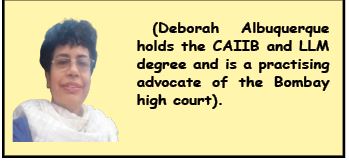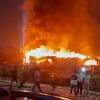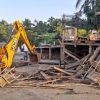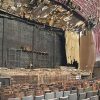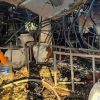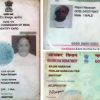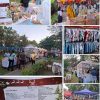Goa is abuzz with excitement as vintage bike and car owners, users, collectors and fans are decking […]
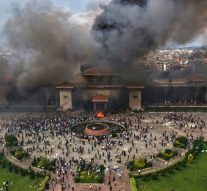
NEPAL PARLIAMENT GOES UP IN FLAMES… As youth assault politicians! By Deborah Albuquerque
LAW, Sep 13- Sep 19, 2025 September 12, 2025NEPAL has become the third country in India’s immediate neighbourhood to see a violent uprising toppling a government in recent years. Prime Minister KP Sharma Oli resigned after more than 20 people died in clashes with police, during anti-government riots triggered by a social media ban. The most shocking aspect is the Nepali youth who call themselves Gen Z, stormed their Parliament, ransacked the entire premises and set it on fire, showing the world that their symbol of sovereignty had gone up in flames.
It took 236 years after the French Revolution in 1789 for the Nepali youth to emulate their counterparts in France, who overthrew their monarchy and set up a republic, which set off similar movements throughout the world, so that empires broke up into smaller republics. With the torching of their Parliament, their Supreme Court, and setting free criminals from the jails across Nepal, the Gen Z have imitated the French Revolution in all its horror and violence. Like the clergy and the royalty who were guillotined, Gen Z has not only destroyed their Parliament and Supreme Court but also assaulted a former prime minister, but kicked and thrashed their former finance minister.
ROYALTY MASSACRE
TO go back 24 years, the Nepalese royal massacre (also called Durbar Hatyakanda) took place on June 1, 2001 at the Narayanhiti Palace, the then-residence of the Nepali monarchy. Nine members of the royal family, including King Birendra and Queen Aishwarya, were shot dead by Crown Prince Dipendra, who shot himself and went into a coma.
Dipendra was declared King of Nepal while comatose after murdering his father and brothers. He died in the hospital three days after the massacre without regaining consciousness. Birendra’s brother Gyanendra then became king. In 2008, Nepal turned into a republic after it abolished an equally corrupt and decadent monarchy.
After the monarchy was abolished, the revolution in Nepal was waiting to erupt because the corrupt politicians, ministers, bureaucrats, and judges gave themselves immunity from being investigated or prosecuted for their misdeeds. Any minister had to just draft a government resolution on his mobile, send it for listing in the business of Parliament and get it passed, for him to get total immunity from any investigation or prosecution. This is what has infuriated the Nepalese youth, who call themselves Gen Z.
CURFEW ON
A NATIONWIDE curfew is still in place, and the army is attempting to bring the situation under control after protesters stormed parliament, and set fire to the homes of several politicians.
For many, the scenes in Kathmandu were reminiscent of the turmoil that gripped Bangladesh last year, and Sri Lanka in 2022.
Though Bangladesh and Sri Lanka are also India’s close neighbours in South Asia, Delhi’s relationship with Kathmandu is special because of historic people-to-people, economic, and strategic ties.
Nepal shares a largely open border of more than 1,750km (1,080 miles) with five Indian states: Uttarakhand, Uttar Pradesh, Sikkim, Bihar and West Bengal. Delhi is closely monitoring developments across the border, with Indian Prime Minister Narendra Modi swiftly responding to the unfolding events.
In 2015, the Nepalese enacted a Constitution which gave total immunity to their leaders from investigation and prosecution just like Crown Prince Dipendra who murdered his father and mother who were the King and Queen of Nepal. He was immune from being tried in court and the Nepalese Constitution wove this principle of putting their leaders beyond the reach of the law, for all the crimes they committed by amassing disgusting amounts of wealth to send their progeny abroad for further studies, while the common youth rotted in the country with inadequate infrastructure for further studies like medicine and engineering.
THE Nepalese will now give themselves yet another Constitution. It is debatable whether this Constitution will work or not. “The violence in Nepal is heart-rending. I am anguished that many young people have lost their lives,” Prime Minister Narendra Modi wrote in a post on X on Tuesday. A trigger for the outbreak of violence was the callousness with which a cabinet minister’s car mowed down an 11-year-old girl who was crossing a street in Kathmandu. The girl was flung over 10 feet into the air but the car did not stop. The vehicle, with the minister sitting inside, sped away.
The minister later described the horrific incident as a “normal accident” and that “some of the medical expenses of the girl” would be reimbursed. The government immediately clamped down on social media to stop videos of the incident from circulating on the ruse that misinformation and defamatory content were being spread to defame the authorities.
SOCIAL MEDIA ROLE
SOCIAL media is a big part of Nepali life. Indeed, the country has one of South Asia’s highest user rates per capita. The demonstrations were triggered by the government’s decision last week to ban 26 social media platforms, including WhatsApp, Instagram and Facebook for failing to meet a deadline to register with Nepal’s Ministry of Communication and Information Technology.
Critics accused the government of seeking to stifle an anti-corruption campaign with the ban, which was repealed on Monday night. While the ban was a catalyst for the current unrest, protesters are also channelling a more deep-rooted dissatisfaction with the country’s authorities.
The Supreme Court of Nepal has said it will begin accepting and hearing habeas corpus petitions starting Sunday (September 14, 2025).
“The death toll from the violent protests led by the ‘Gen Z’ group since Sunday evening had increased to 34,” according to official estimates.
Meanwhile, the Nepal army on Thursday (September 11, 2025) extended prohibitory orders in three districts of Kathmandu Valley while allowing public movement during specific windows, even as the Himalayan nation gradually returned to normalcy.
With the Tribhuvan International Airport reopened, our Indian states are focusing on bringing back their citizens. Goa may be having some of their own citizens stranded in Kathmandu or in Nepal.
